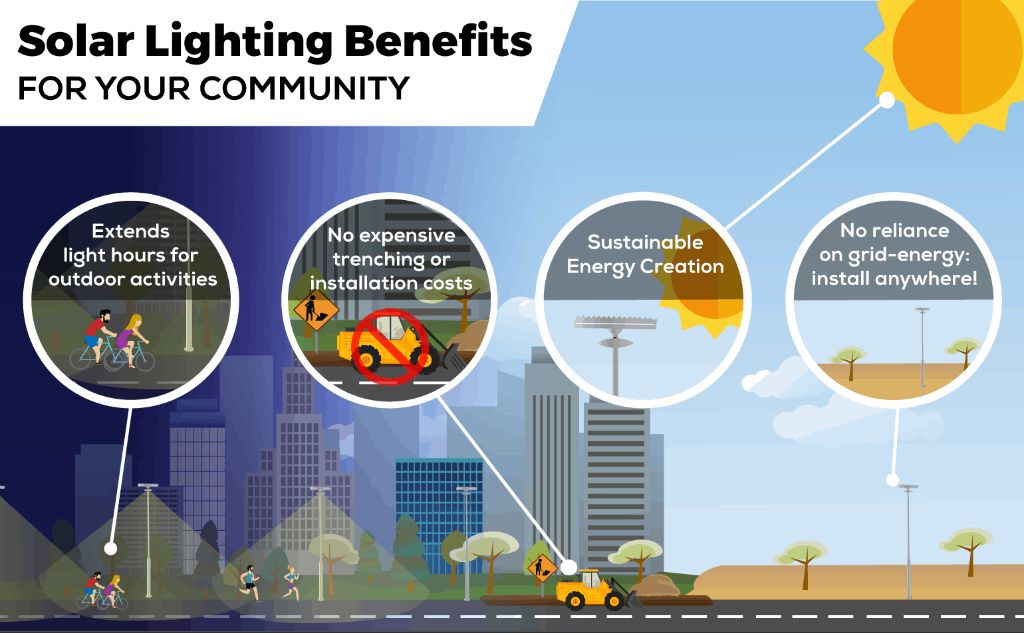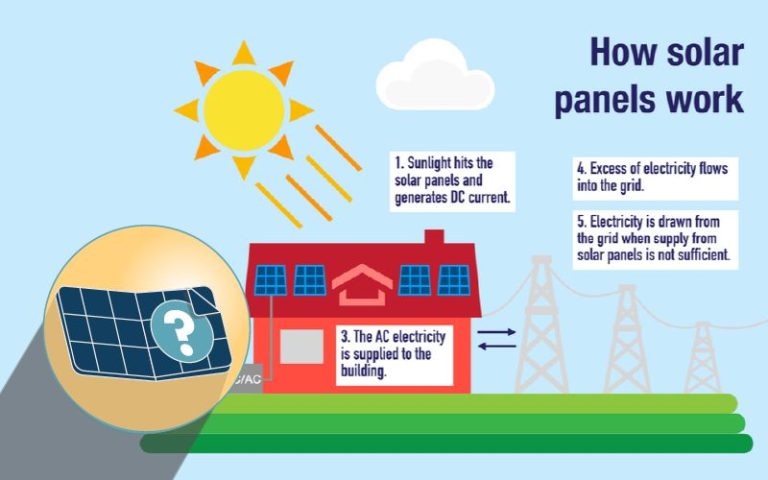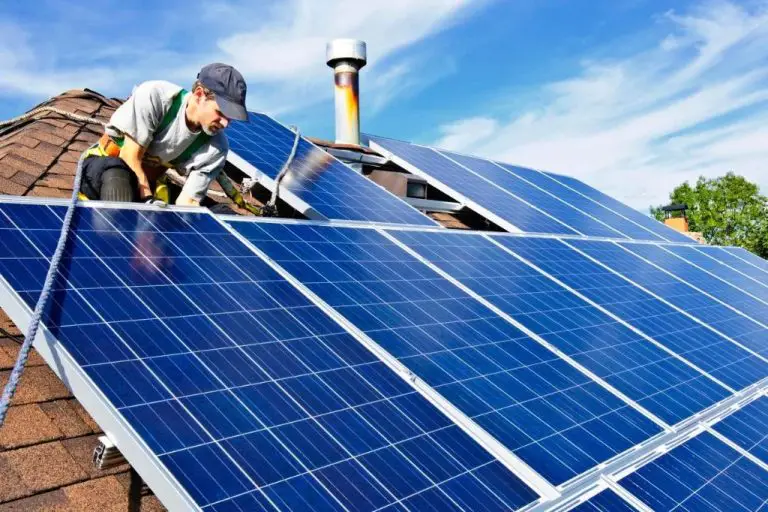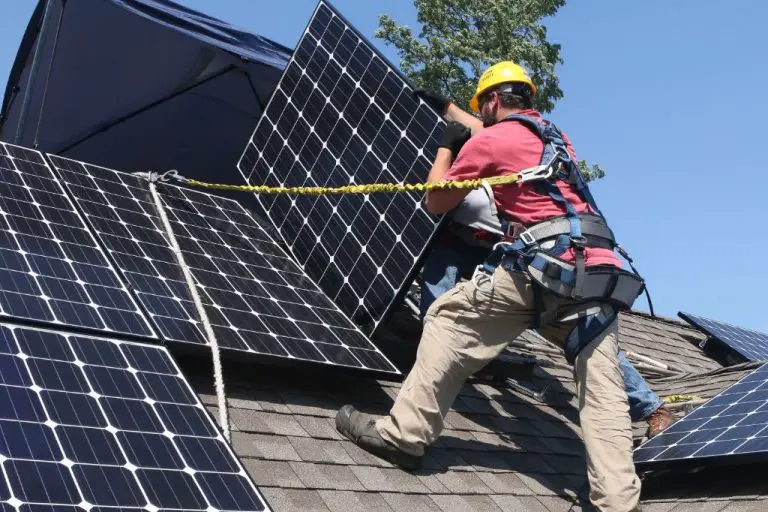Is Solar Energy Used For Lighting?

Solar energy has become increasingly popular as a renewable energy source over the past few decades. It is a clean and sustainable way to generate electricity and power various applications. One of the common uses of solar energy is for lighting purposes. Solar panels can absorb sunlight and convert it into electricity that can then be used to power lights (https://www.mechanicaleducation.com/what-are-common-uses-of-solar-energy/).
There are several ways that solar energy can be utilized for lighting. Photovoltaic solar panels can generate electricity during the day that gets stored in batteries and used at night to power lights. Solar-powered street lights are becoming more widespread in cities and along roadways. In addition, small-scale solar lighting systems are used for lighting gardens, pathways, outdoor areas, and even indoors.
Solar energy is certainly being leveraged as a means to provide lighting. In this article, we will explore in detail how solar energy is used for lighting in homes, businesses, public spaces, and other applications.
History of Solar Energy
Solar energy has been harnessed in various ways throughout history. The earliest recorded use of solar energy dates back to 7th century B.C. in Ancient Greece, where magnifying glasses were used to focus sunlight to light fires. Ancient Greek philosopher Socrates also described a “burning mirror” that could concentrate sunlight to produce heat. Throughout the next several centuries, various civilizations experimented with passive solar design in architecture to capture sunlight for illumination and heating.
By the 18th century, researchers were experimenting with more advanced technology to harness solar power. In 1767, Swiss scientist Horace de Saussure built one of the first solar collectors – a device used to absorb and trap heat from the sun. His invention was later used to power a small steam engine. The 19th century saw major strides in solar technology, including the invention of photovoltaics – a process that converts sunlight directly into electricity using solar cells made of certain materials.
One landmark was the creation of the world’s first solar-powered motor in 1883 by American engineer Charles Fritts. Fritts coated the semiconductor material selenium with an extremely thin layer of gold to form the solar cells. In the early 20th century, Albert Einstein won the Nobel Prize for explaining the photoelectric effect that makes photovoltaic technology possible. This laid the groundwork for harnessing solar power on a wide scale.
How Solar Panels Work
Solar panels, also known as photovoltaic (PV) panels, convert sunlight into electricity using the photovoltaic effect. PV panels contain solar cells made up of semiconducting materials like silicon that absorb photons from sunlight and release electrons. The stimulated electrons create an electric current that flows through the solar cells and is channeled into wires as electricity (Source).
PV panels are composed of many solar cells wired together in a grid-like pattern on the panel surface. The more sunlight that hits the panel, the more electricity that is produced. The direct current (DC) electricity generated by solar panels flows to an inverter which converts it into alternating current (AC) that can be used to power homes, businesses, and the grid (Source).
Storing Solar Energy
Solar panels convert sunlight into electricity instantly. But this electricity needs to be stored for use when the sun isn’t shining. Batteries are commonly used to store solar electricity generated during the day, so it can be used at night to power lighting and other electrical loads. Lead-acid and lithium-ion batteries are popular choices for home solar energy storage 1.
During the day, the solar panels charge the batteries. Then at night, the stored electricity in the batteries can be used to power LED lights, light bulbs, and lighting fixtures. Without battery storage, solar-generated electricity would only be available while the sun is shining. But with batteries, solar energy can enable lighting at all hours of the day or night.
Stored solar electricity provides a clean, renewable energy source for lighting. Batteries coupled with solar panels allow homes and businesses to reduce their reliance on the utility grid for their lighting needs.
Solar Lighting Systems
Solar lighting systems harness the sun’s energy using photovoltaic panels to generate electricity that powers LED lights and other lighting fixtures (Lowes.com). They typically include solar panels, batteries for energy storage, lighting fixtures like lamps or string lights, and controllers. Complete solar lighting kits are available that contain all the components needed for installation.
Solar-powered street lights are a common municipal application of solar lighting systems. They consist of solar panels mounted on poles that charge batteries during the day to power LED street lamps at night. Some advantages of solar street lighting include lower energy costs, reduced maintenance compared to conventional lighting, and avoiding the need to connect to the electrical grid in remote areas (Lowes.com). However, solar lighting may not work well in areas that don’t receive abundant sunlight.
Overall, solar lighting systems provide an eco-friendly lighting solution by reducing reliance on fossil fuels. The main limitations are dependence on sunny weather and higher upfront costs compared to conventional lighting. However, over the long term, the energy savings from solar can make it a cost-effective choice.
Solar Lighting Applications
Solar lighting has many applications in homes, commercial spaces, and developing areas of the world. In homes and offices, solar lights provide efficient and eco-friendly illumination for outdoor areas like patios, walkways, and gardens. Popular solar lighting products for homes include solar path lights, spotlights, step lights, and lanterns (https://solarmagazine.com/solar-lights/).
Commercially, solar lights are used for applications like street lighting, parking lot lighting, signage and billboards, and lighting along pathways and parks. Solar-powered LED street lights are an energy-efficient alternative to traditional street lights in areas without ready access to an electrical grid (https://www.sepco-solarlighting.com/blog/5-of-the-best-types-of-solar-led-lighting-systems).
In developing countries, solar lighting provides illumination to communities without electrical infrastructure. Solar lanterns, flashlights, and lighting kits provide portable, renewable lighting to replace dangerous kerosene lamps. Solar street lights also provide community lighting and security. Solar lighting improves quality of life by enabling productivity, education, and social activities after dark.
Benefits of Solar Lighting
There are several key benefits that make solar lighting an attractive option for many homes and businesses.
Environmentally Friendly
Solar lights are powered by the sun, making them a clean and renewable energy source. Unlike traditional lights powered by electricity from fossil fuels, solar lights do not contribute to greenhouse gas emissions or pollution (Source). This makes them an environmentally responsible lighting choice.
Reduced Electricity Costs
Because solar lights are powered by the sun, they do not require connection to the electrical grid. This means no electricity bills associated with powering the lights. The savings on electricity costs can add up over time, providing financial benefits (Source).
Energy Independence
With solar-powered lighting, homes and businesses can achieve greater energy independence and resilience. Solar lights function off-grid, so power outages will not affect them like traditional grid-tied lights. This provides lighting even in emergency situations when electricity is disrupted (Source).
Limitations of Solar Lighting
While solar lighting has many benefits, it also has some limitations to consider. One of the main downsides is the higher upfront costs associated with installing a solar lighting system (https://www.anethic.com/blog/advantages-and-disadvantages-of-solar-street-lights). The solar panels, batteries, and fixtures can be more expensive than traditional wired lighting options. However, over time the lower operating costs can make up for the higher initial investment.
Another limitation is the intermittent power supply. Solar lighting relies on sunlight to charge the batteries that store energy. Cloudy weather or limited daylight hours, especially in winter, can reduce the charging capacity and duration of illumination (https://www.kanlux.com/en/articles/Solar-lighting-Key-advantages-and-disadvantages). Supplemental lighting or larger solar systems may be needed for continuous lighting in some applications.
The applications for solar lighting may also be limited based on the lighting needs. Solar lighting works best for low-wattage applications like path lights, spot lights, and some security lights. Very bright flood lights or street lights with high electricity demands may be better suited to grid power (https://www.warehouse-lighting.com/blogs/lighting-resources-education/solar-powered-outdoor-lights-pros-cons). Careful planning is needed to size the solar system appropriately for the intended use.
The Future of Solar Lighting
The future looks bright for solar lighting due to ongoing improvements in solar technology and declining costs. According to a LinkedIn article, “The Future of Solar Street Lights”, solar panels and LED technology continue to become more efficient at converting sunlight into electricity, enabling solar lights to store more energy and shine brighter. Solar lighting is also projected to become cheaper. As solar technology scales up in production and more companies enter the market, costs are expected to decrease. This will make solar lighting even more cost competitive with conventional grid electricity and fuel-based lighting.
With these technology and cost improvements, projections point to strong growth for solar lighting. The global solar outdoor lighting market alone is forecast to grow at a CAGR of over 17% from 2022-2026, as noted in the LinkedIn article “Solar Powered Outdoor Lights Market Top Players”. Solar lighting is seen as an essential technology for expanding energy access to remote areas and as a clean, renewable alternative to traditional lighting. The future is bright for solar powered lighting around the world.
Conclusion
In summary, solar energy is increasingly being used as a clean, renewable source for lighting in homes, businesses, public spaces and more. Solar panels convert sunlight into electricity that can power LED bulbs and solar lighting fixtures for indoor and outdoor illumination. Some key highlights include:
- Solar panel systems generate electricity that is stored in batteries for powering lights at night or on cloudy days.
- Solar street lights are now widely used for roadways, parking lots, parks, and signs.
- Solar garden and security lights powered by small solar panels are popular for outdoor spaces.
- Solar lighting provides bright, natural illumination without relying on the electrical grid.
- Advances in solar cell technology and energy storage make solar lighting more affordable and efficient.
In conclusion, solar energy is increasingly utilized as a clean, renewable option for powering lighting in homes and communities. While solar cannot completely eliminate the need for grid electricity, it is an eco-friendly complement to traditional power sources. We can expect the applications and benefits of solar-powered lighting to continue expanding in the future.





